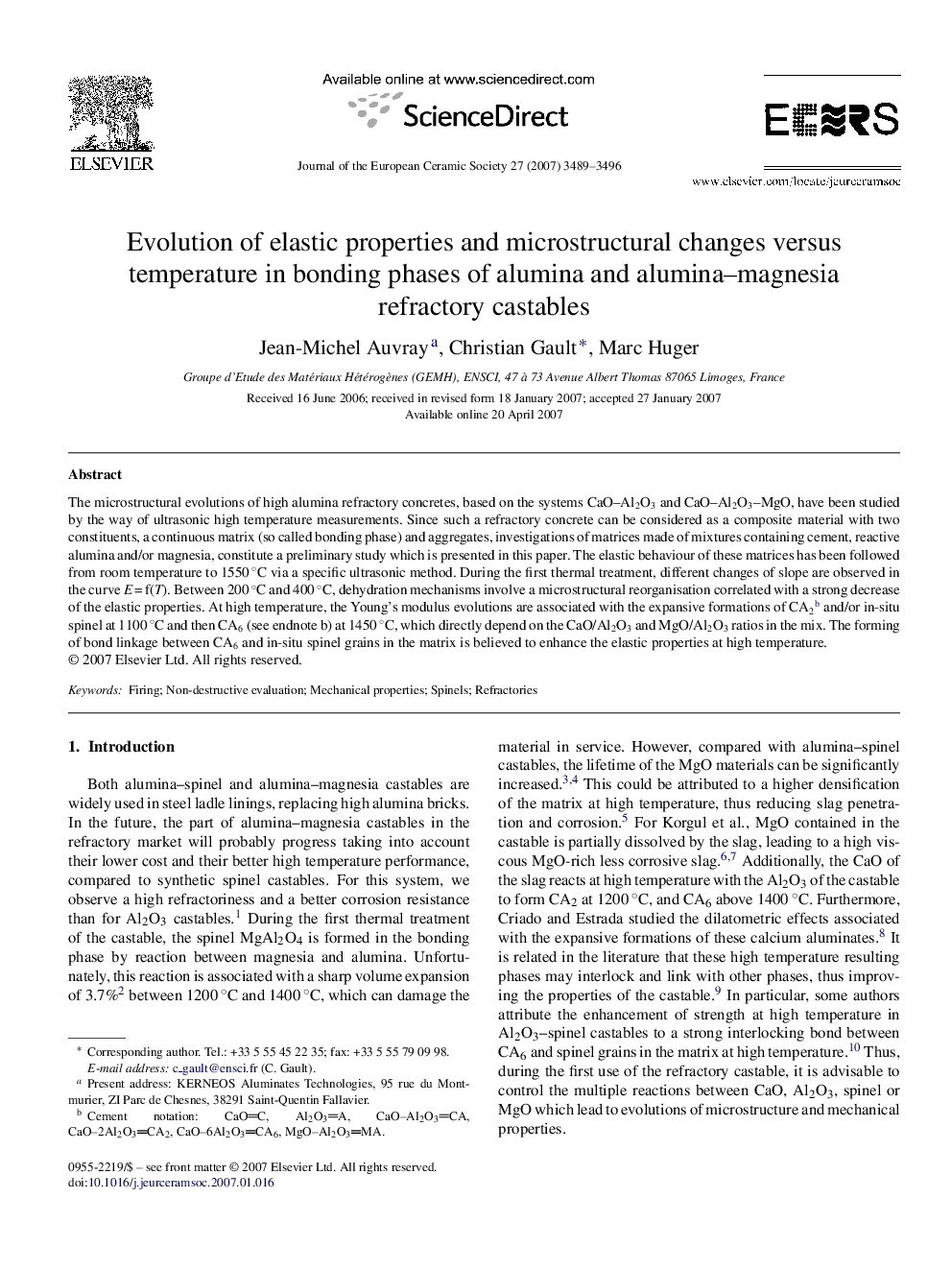| Article ID | Journal | Published Year | Pages | File Type |
|---|---|---|---|---|
| 1477045 | Journal of the European Ceramic Society | 2007 | 8 Pages |
The microstructural evolutions of high alumina refractory concretes, based on the systems CaO–Al2O3 and CaO–Al2O3–MgO, have been studied by the way of ultrasonic high temperature measurements. Since such a refractory concrete can be considered as a composite material with two constituents, a continuous matrix (so called bonding phase) and aggregates, investigations of matrices made of mixtures containing cement, reactive alumina and/or magnesia, constitute a preliminary study which is presented in this paper. The elastic behaviour of these matrices has been followed from room temperature to 1550 °C via a specific ultrasonic method. During the first thermal treatment, different changes of slope are observed in the curve E = f(T). Between 200 °C and 400 °C, dehydration mechanisms involve a microstructural reorganisation correlated with a strong decrease of the elastic properties. At high temperature, the Young's modulus evolutions are associated with the expansive formations of CA2b and/or in-situ spinel at 1100 °C and then CA6 (see endnote b) at 1450 °C, which directly depend on the CaO/Al2O3 and MgO/Al2O3 ratios in the mix. The forming of bond linkage between CA6 and in-situ spinel grains in the matrix is believed to enhance the elastic properties at high temperature.
